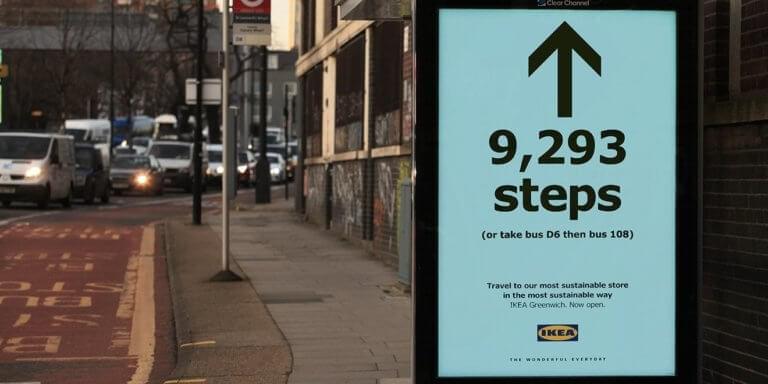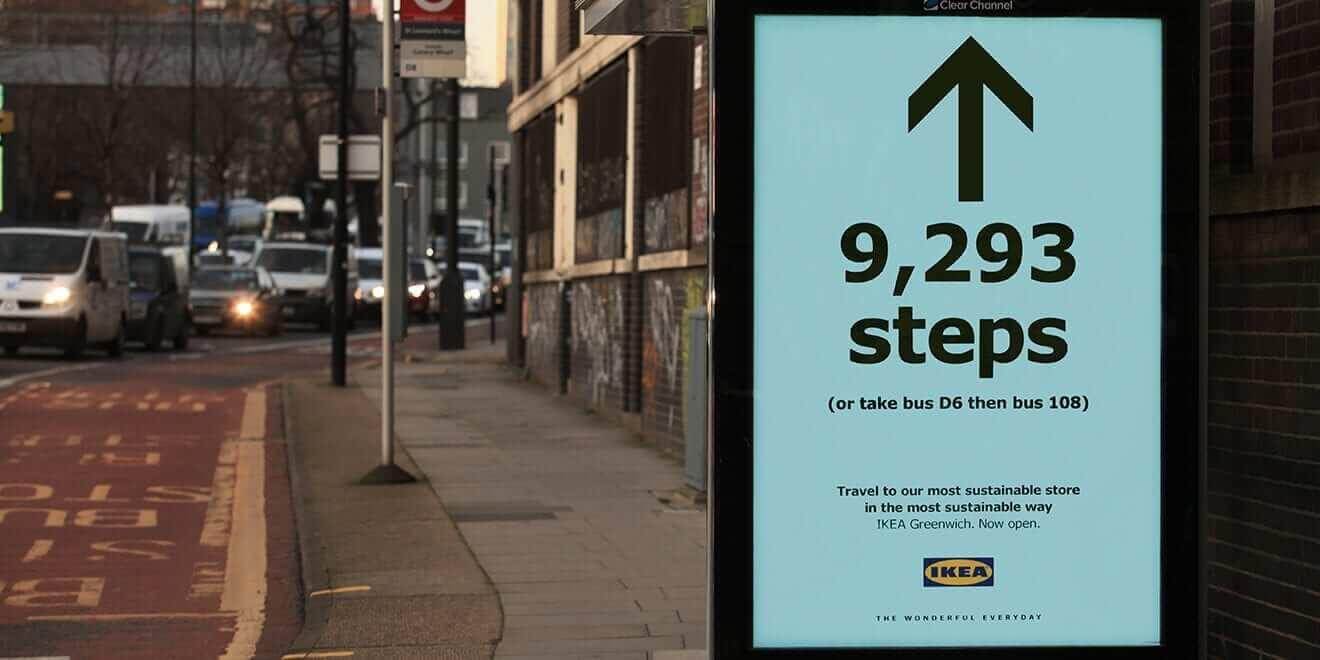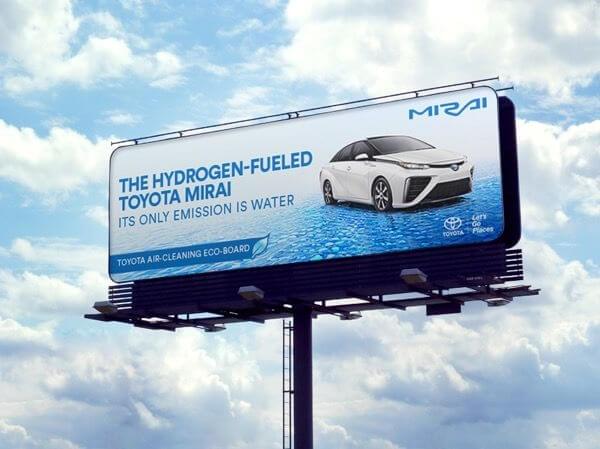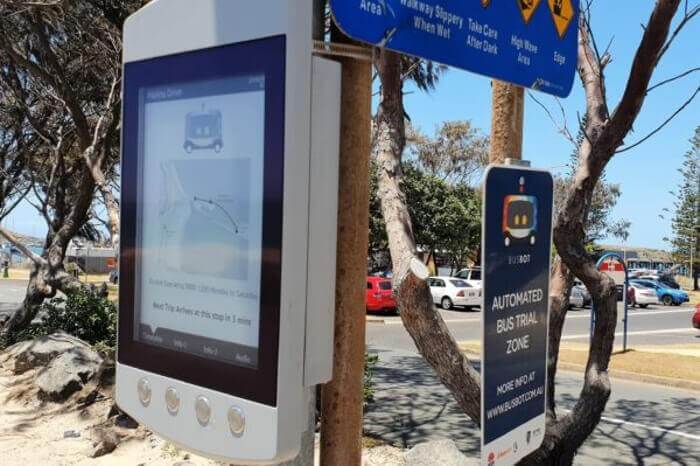
Advertising is far and wide seen as a valuable and profitable marketing strategy that is used by business savvy people as well as creatives. One of the main concerns that stems from advertising, especially excessive advertising, is that it has the potential to contribute to an overflow of materials and further land pollution. We know advertising wears many hats and can take on different shapes and sizes but, particularly with tangible advertising ex. print or poster, questions could arise as to whether or not this method is wasteful and unsustainable. For the purpose of this post we’re going to dissect why consumers prefer sustainable advertising through an informative Nielsen report, see how traditional outdoor advertising can turn into environmentally friendly creations, and explore some digital out-of-home advertising options that meet the criteria of sustainability.

Consumers Buying Sustainable
According to a Nielsen report titled, “How and Why Sustainability is Gaining Momentum with Customers” researchers found that products with claims to be sustainable did better in growth rate than the total products found in categories such as coffee, chocolate, and bath products. These product categories were carefully examined by Nielsen because of their obvious differences, but also because there are sustainable methods to manufacture and sell them. These often purchased consumer goods were perfect examples of products that can be sold on the sustainability selling point, urging consumers to think twice about their other buying habits. Results from the report showed that the average for all three categories had 3 percent more growth for sustainable products, with coffee at 11 percent more, chocolate at 2 percent more, and bath products at 13 percent more than the totals in their product categories. These were the results from a 52-week period of product sales, and it clearly highlights a sustainable product favour and uprise.
Brands that advertise using sustainability claims can actually receive a better shelf placement at retailers because of an increasing demand for eco-friendly sources. Referring to the Nielsen report, “Brands that are able to strategically connect (sustainability) to actual behavior are in a good place to capitalize on increased consumer expectation and demand… Sustainability claims on packaging must also reflect how a company operates inside and out.” (Houlihan & Harvey 2018), which brings awareness to sustainable packaging advertising for everyday products. That’s why the company story on sustainable coffee/tea/chocolate packaging is so lengthy and detailed; they must be transparent about their environmental footprint in order to claim sustainability, especially when targeting the eco-conscious shopper.
The report concludes in saying, “Unmet consumer needs exist across many categories. Strategically aligning your business and marketing strategy to meet that unmet demand will ensure that the next big sustainability wave is a market win for your brand.” (Houlihan & Harvey 2018), which speaks to future advertising initiatives that ride on, but are truthful to, sustainability causation.

Examples of Sustainable Outdoor Advertising
This paragraph will pretty much answer the headline of this post because YES, advertising can be sustainable. Eye-catching outdoor advertisements and installations are fantastic ways to feature brands while still remaining a healthy out-of-home spectacle. Companies are understanding that a push towards health and wellness is progressive, and brands that show environmental compassion are performing a modern act of due diligence.
Toyota’s “Eco-Billboard“, pictured above, helps to remove nitrogen dioxide from the air by acting as an air purifier through a titanium dioxide-coated vinyl. Since Toyota is advertising their Mirai model, which is a hydrogen fuel cell vehicle that strictly omits water vapors, they thought it beneficial and sustainable to do more good on the planet through their out-of-home opportunity. This eco-billboard reacts to oxygen by converting nitrogen dioxide to nitrate, which helps to cleanse the air people in the proximity will breathe.
Urban garden billboards, such as the pictured below example by Wildstone in London, is a living garden billboard display that is made by sustainable oak and large planters. This sustainable outdoor advertising example makes onlookers think about the need for these resources in a densely populated London neighborhood, while also creating a space for potential marketers to invest in and contribute to.

Sustainable Digital OOH Examples
When we think of digital screens in an advertising world, we typically don’t imagine them being all that eco-friendly. However, advertisers, marketers, and innovators have found a few interesting ways to digitally provide advertising messages while lessening the affect they have on the planet’s wellbeing.
Solar digital billboards can create energy from the sun everyday to power two digital billboards for 24 hours. It’s no surprise advertisers are using this energy form to power their marketing messages. The cost for solar energy power is less than $0.30, and it’s becoming the cheapest source of power on a global basis which is something that advertisers are already taking advantage of.
E-Paper displays use reflected light to display messages in any lighting condition not contingent on the surrounding weather. They are 36 times more energy efficient than an LCD screen display, which means they can last 720 hours for the same amount of power used in an LCD display only lasting 20 hours. These materials clearly reduce energy consumption and are a sustainable way to advertise.

After examining the Nielsen report on consumers making sustainable advertising choices through choosing specific products, looking at examples of outdoor advertising that help clean up our earth, and seeing digital OOH markers that drive sustainability as much as they advertise, it’s clear that advertising can, and will continue to be, sustainable so long as creators are making the right, impactful marketing decision. How’s that for a cleanup.
References:
Harvey, Bonnie; Houlihan, Michael (1 December 2018). It’s Official: Customers Prefer Sustainable Companies. Entrepreneur. Retrieved from: https://www.entrepreneur.com/article/324001


